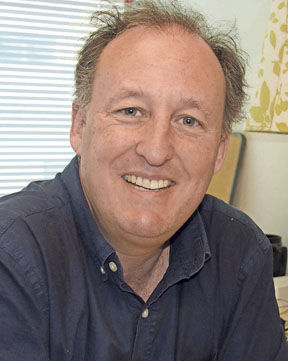Maurie J. Cohen, Princeton
The Princeton Council has recently retained a consultant to review local land-use regulations due to mounting concern about residential teardowns throughout the community. The early stages of this process will be critical because this is when the scope of the problem will be framed and possible remedies will be prefigured. Construction fees and zoning reform are absolutely essential, but we should not lose sight of the larger picture.
Despite appearances, the teardown phenomenon does not spring solely from tacit collusion among avaricious developers, mercenary home sellers, and complicit municipal administrators. Comprehensive assessment requires acknowledgement of three issues.
First, unlike many of our neighboring towns, Princeton has effectively reached maximum build-out. Aside from a few stray parcels, we have no remaining farmland or derelict industrial districts available for conversion to residential subdivisions. Because the costs of municipal services are annually increasing and stiff hikes in property taxes are unpopular, a balanced budget depends on growing the taxable value of existing real estate. As such, it is difficult to resist replacing a home generating $10,000 in property taxes each year with a new one that pays two or three times that amount.
Second, home values in Princeton are no longer impelled merely by area demographics, outmigration from New York City, university expansion, and fortunes of the pharmaceutical industry. The community has become an attractive node in a global real-estate market and local conditions are shaped by social, political, and economic developments in Beijing, Bangalore, Brussels, and elsewhere.
Finally, it is necessary to appreciate how the notion of “sustainability” is locally expressed. We support recycling and composting. We seek to accommodate non-motorized mobility by, for instance, installing bicycle-friendly markings on our roadways. We celebrate the home-town establishment of world-class institutes devoted to innovating new technologies and scientific pathways.
While not unimportant, these initiatives will always be insufficient because they fail to address the systemic factors that induce residents of generally prosperous communities to adopt lifestyles predicated on the consumption — oftentimes indiscernible or partially concealed — of prodigious amounts of energy and other resources.
These circumstances suggest a need not only for new building controls, but also for a recharged understanding of communal well-being. One of the paradoxes of municipal planning is that despite the apparent urgency of contemporary debates, it often takes decades for decisions to become fully manifest. Our community today is largely an aggregation of choices made during the 1950s and 1960s. Some of these decisions were based on prescient vision with one notable example being the retention of an uptown commercial district.
Other choices have not played out as well. For instance, more could have been done to discourage the mounting stranglehold of the automobile and the challenge of affordable housing could have been handled more effectively.
The upshot is that the teardowns are the most visible symptom of a more deeply seated predicament, one that is anchored, as outlined above, in the incongruities of municipal finance, the bewildering juxtaposition of global and local dynamics, and the steadfast devotion that we maintain to engineered solutions to inherently social problems.
So if updated ordinances are an indispensable but ultimately inadequate response to the rash of residential demolitions, how might we augment our intentions? One idea is to enhance public understanding about the medium- and long-range implications of contemporary land-use decisions. There are indications that we are entering the final throes of a decades-long infatuation with neo-liberalism which has typically derided public planning for the future. We could anticipate this eventuality by, for instance, convening a municipal commission to formulate visions of community life 50 or 100 years from now. What kind of place will Princeton be in 2066 or 2116? What do we anticipate will be the main forces of social change? Such undertakings are obviously fraught with mindboggling uncertainty. The aim, though, would not be to produce a blueprint but to enhance our capacity for creative engagement with formidable questions.
Another alternative recognizes that the Princeton Council has enviable convening authority. As recent events have demonstrated, what happens here is of considerable interest in the wider world. With support from international organizations like the Compact of Mayors, the Global Compact Cities Programme, and the Urban Sustainability Directors Network, fascinating social innovations are unfolding throughout the world. Princeton could join with pacesetting peers already engaged in 21st century reinvention, draw lessons from the experiences of others, and become itself a place for robust experimentation.
For instance, we could be a testbed for retrofitting existing single-family homes. After all, it takes a great deal more imagination to repurpose a pre-existing structure than to raze it and build a replacement in accordance with an off-the-shelf design.
A final recommendation recognizes that transparency is a precondition of effective governance. A beneficial civic project for a high-school student with a bit of extra time this summer would be to launch “Princeton Teardown Watch.” The website would monitor residential demolitions and disseminate “before” and “after” photographs and other public information.
Impetus for raising the discussion to a higher order of complexity stems from the fact that technical fixes to systemic problems like suburban gentrification rarely provide satisfactory solutions. Although Albert Einstein probably did not anticipate the current practice of destroying serviceable homes and replacing them with larger and more resource consumptive alternatives, he surely understood the more general class of quandaries. In reflecting on the tribulations of his day, he cogently observed, “The significant problems we face cannot be solved at the same level of thinking we were at when we created them.” We would be wise to take this advice to heart.
A Princeton resident, Maurie J. Cohen is a professor of Sustainability Studies in the Department of Humanities and director of the Program in Science, Technology, and Society at the New Jersey Institute of Technology, co-founder and executive board member of the Sustainable Consumption Research and Action Initiative (SCORAI), and editor of the journal Sustainability: Science, Practice, and Policy.

